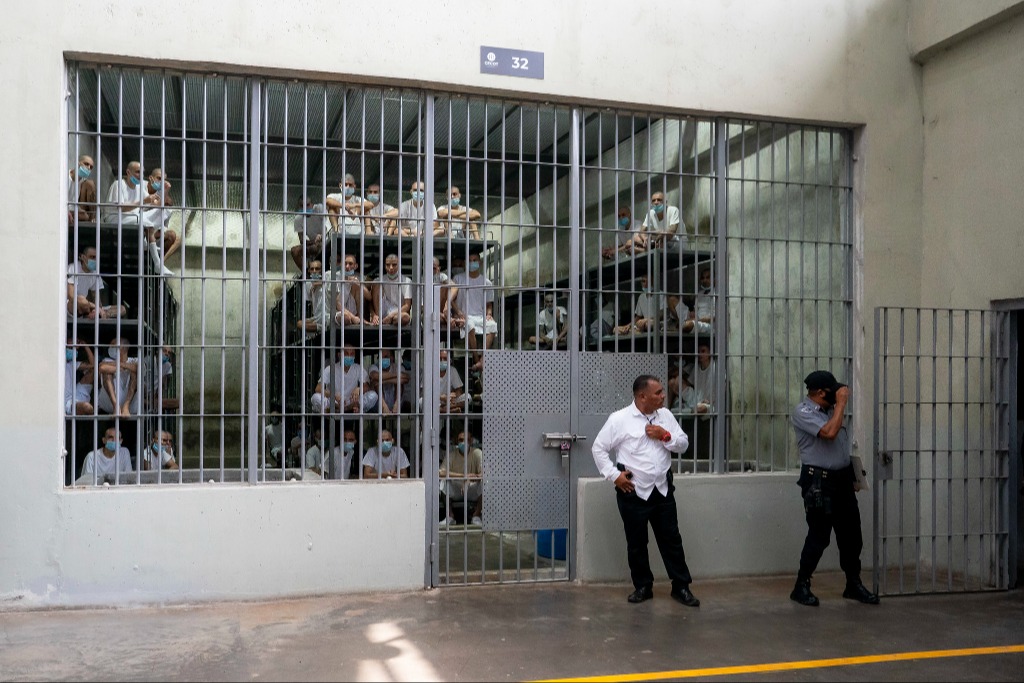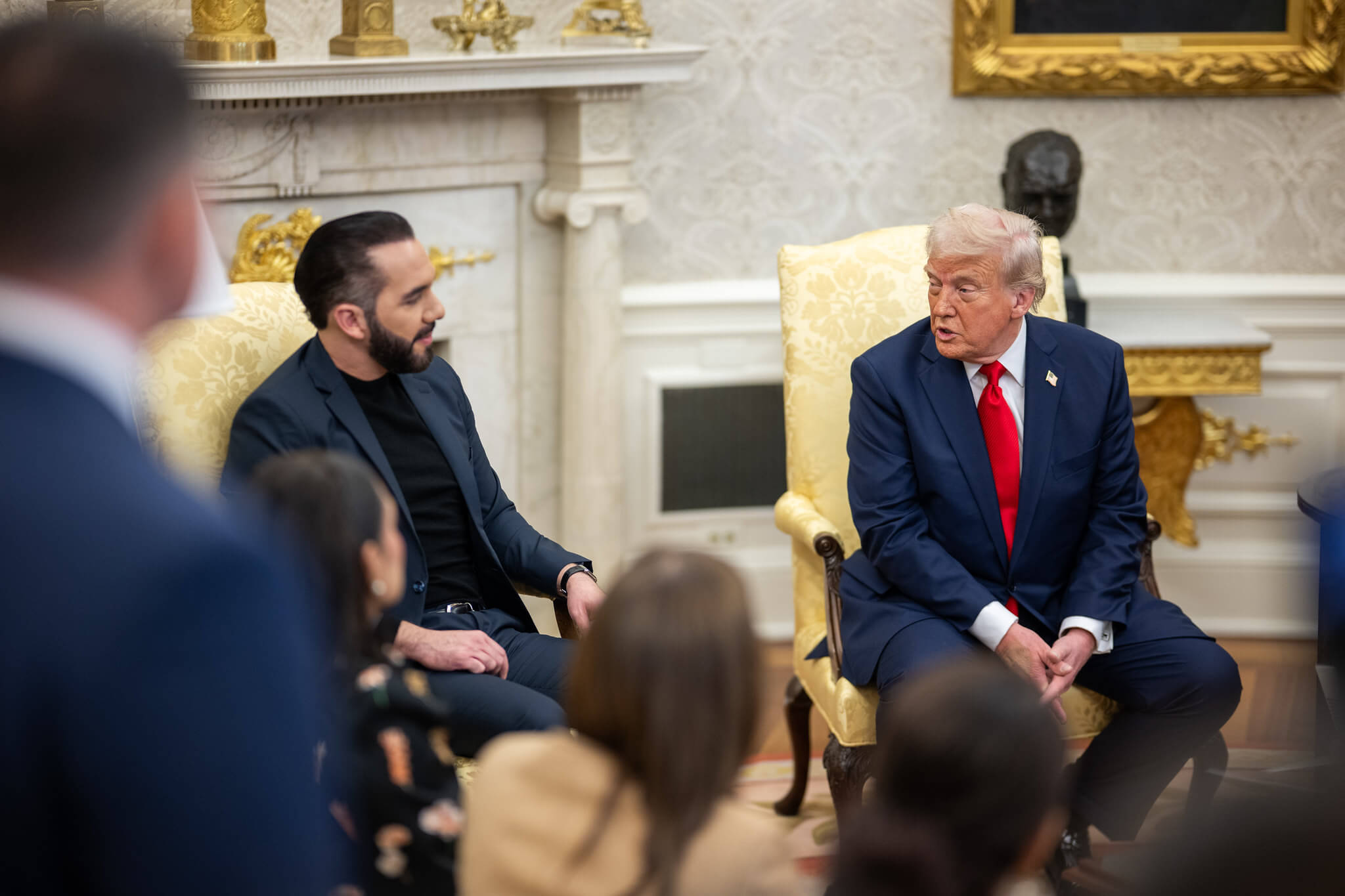The U.S.’s China Strategy Needs New Tools
The Biden administration should rethink its geoeconomic toolkit and work with Congress to provide the executive branch more effective means to respond to predatory Chinese economic policy.

Published by The Lawfare Institute
in Cooperation With

On Jan. 20, Treasury Secretary Janet Yellen committed to “use the full array of tools” to counter China’s “abusive, unfair and illegal practices.” But however determined Yellen and the rest of President Biden’s team may be, the toolbox they inherited from the Trump administration is a few drill bits short.
Chinese state capitalism caught U.S. policymakers flat-footed. While far from perfect, the “China model” is dramatically reshaping global industry through the concentrated power of economic tools like subsidies, market protection, forced technology transfer and economic espionage. “CCP Inc.” now has the scale to “unleash waves of overcapacity that undercut U.S. firms, … support[] China’s military modernization and overseas expansion,” and, in so doing, threaten key U.S. interests.
Thanks to U.S. leverage over global economic networks, policymakers maintain an unparalleled capacity to push back using sanctions, export controls and investment restrictions. Trade, however, presents a unique dilemma. The World Trade Organization is not well equipped to deal with Chinese policies and requires substantial reform to meet the challenge. Meanwhile, U.S. trade instruments are limited, outmoded and even counterproductive when it comes to pursuing national security ends. The Biden administration should rethink its geoeconomic toolkit and work with Congress to provide the executive branch more effective means to respond to predatory Chinese economic policy targeting allies and strategic industries.
The Current Tools Don’t Measure Up
President Trump leaned heavily on Section 232 and Section 301 authorities during his China trade war. These tools were established and expanded between the 1960s and 1980s with the respective aims of protecting the U.S. defense industrial base and pushing Japan and Western European nations to restructure their economies in alignment with liberal ideals. Unlike today, the nation’s most prominent geopolitical rival back then—the USSR—was not a full participant in the international economic system. Section 232 was rarely employed before Trump, while Section 301 is a market access tool not well suited to addressing national security issues.
Trump’s China trade strategy failed. China survived Trump’s trade war, a campaign that amounted to the most pressure the U.S. could conceivably impose using traditional trade tools. Chinese President Xi Jinping has demonstrated his commitment to maintaining China’s “power trader” strategy. Pursuant to this framework, the state intervenes in the domestic economy to support industries that increase national power while using aggressive trade tactics abroad to increase market share and create dependencies.
Trump’s tariffs also didn’t achieve their domestic objectives. For example, he failed to resurrect the U.S. steel industry and injured manufacturers downstream in the process. In addition, Trump’s nontransparent and undisciplined use of Section 232 risks its legitimacy in future national security crises. His actions under the same authority against Canada, Mexico, the European Union and Japan strained credulity. Instead of yet another fruitless push to get China to embrace reform, the U.S. should aim to curb the worst excesses of China’s bullying international economic policy, while promoting strategic industries with trade actions and targeted industrial policy.
Sharpening the Tools
The U.S. needs to implement a multifaceted strategy to combat Chinese coercion. Success depends on a strong domestic foundation. As many observers have argued, Biden should support advanced and critical industries through coordinated industrial policies with an emphasis on international competitiveness in next-generation technologies and clean energy alternatives.
Biden appears to be heading in this direction based on his executive orders expanding Buy America provisions and ordering a review of supply chains for critical products. His promise for a “worker-centered” trade agenda is reminiscent of Franklin Roosevelt’s “New Deal for a new world,” which sought to reconstruct the postwar international economic system to support and reflect the new domestic economic compact.
To succeed in the 21st century, a comprehensive approach will require reinvesting in government capacity by creating a modernized Reconstruction Finance Corporation to expand public investment and new federal hiring procedures to attract leading talent with deep sectoral expertise to civil service. Biden’s strategy should also be tied to a major expansion of existing programs to promote exports, attract foreign direct investment and increase skilled immigration.
Biden should work with Congress to reform Section 232. Congress ought to tweak the authority to enable policymakers to impose retaliatory tariffs in response to coercive trade practices that target allies when those actions also threaten U.S. national security interests. This would apply, for example, to the recent punitive Chinese trade actions against Australia. This expanded interpretation risks inviting abuses that would undermine rather than reinforce geoeconomic objectives. But the risks of not extending the authorities, and thus abandoning U.S. allies, are even greater. The threat of abuse should be offset through enhanced congressional oversight and clearly defined limitations on executive authorities including a “no-first-use” policy and guidelines to restrict its applicability to cases that meet the World Trade Organization’s national security exception. Serving Australian wine at the White House holiday reception just isn’t enough.
This strategy of using aggressive unilateral measures in pursuit of broader international reform has an encouraging if controversial precedent in the Uruguay Round. At the time, U.S. negotiators used the threat of Section 301 to build leverage in their pursuit of legalized dispute settlement and new rules on intellectual property, services and investment. In 1989, U.S. Trade Representative Carla Hill employed “Super 301” to name and shame Japanese, Brazilian and India for unfair practices. Trading partners resented the move but came to view multilateral concessions as preferable to an enduring spiral of U.S. threats and counter-retaliation. The U.S. certainly does not hold the same relative international weight as it did at the end of the Cold War. But the expanded Section 232 could help the U.S. build a coalition of the willing to bolster the impact of its norm-enforcing actions.
The new Section 232 should be linked to congressionally authorized, rule-based assistance programs for American firms and workers caught in the geoeconomic crossfire. The U.S. should also explore creating a special purpose vehicle to buy and hold commodities and extend loans to firms that lose sales thanks to aggressive Chinese trade action, financed either directly by congressional appropriations or by Federal Reserve borrowing. The coronavirus pandemic has shown the power of the Fed to support U.S. industry in times of crisis, and that power could also be deployed as an insurance policy to inoculate firms against Chinese government actions. In addition to sharing the cost burden, mandated assistance would disincentivize Chinese coercive practices by better enabling policymakers to withstand political pressure while also removing favoritism and corruption from the subsidy and tariff exclusion processes.
Building a Coalition
Biden should focus on rebuilding political consensus during his moratorium on new trade agreements by launching a presidential commission modeled on the “Williams Commission.” The commission, composed of business and labor leaders, prepared a July 1971 report that shaped the following two decades of U.S. trade policies and helped reconstruct bipartisan support amid rising import penetration. Alongside the full array of trade challenges the U.S. faces, the commission should study creative solutions to address the macroeconomic roots of the U.S. trade deficit, including currency intervention disciplines, mechanisms to counter China’s suppression of domestic demand and proposals to tax capital inflows. Michael Pettis argues such a tax could be used to shrink or even eliminate the trade deficit by reducing capital inflows until they are in balance with outflows, thereby balancing the U.S. current account and reducing damaging global imbalances.
From there, the U.S. can operationalize the international components of its strategy. Biden should consider launching a program of mutual defense trade pacts to protect countries like Australia, Chile and South Korea from Chinese predatory trade behavior. Recent events have shown how important cementing alignment with allies can be. The conclusion of the EU-China investment agreement, for example, is just the latest sign that the interests of the U.S. and its allies will not always be aligned in relation to China. Interests, however, aren’t set in stone. Mutual defense trade pacts can help bring the U.S. and its allies closer by overcoming collective action problems that presently give China the upper hand in its bilateral relationships.
NATO-like defense trade pacts triggering automatic snapback tariffs punishing the Chinese government for flagrant behavior could have a deterrent effect while reassuring allies of America’s commitment to them. This group could start with existing free trade partners before building out to include close allies like Japan and the United Kingdom. The revised Section 232 would be the stick underlying these pacts, which could be supported further by extending the aforementioned Federal Reserve buying program to foreign commodities producers (a “Strategic Shiraz Reserve,” perhaps?).
How Will China Respond?
Ultimately, China’s sense of its national interest is unlikely to change dramatically under Xi. Beijing will cooperate on issues that it believes advance those interests (see: climate change) while holding firm on those it does not (see: state subsidies for strategic industries). The same can be expected for its use of potential retaliatory tools such as rare earth quotas. Xi will hold his nose on aggressive U.S. trade action or industrial policy so long as he believes Chinese rare earths sales are ultimately beneficial for advancing technological self-reliance and broader economic development.
The Biden administration can show Xi that the U.S. means business by enhancing support for strategic domestic industries like semiconductors and demonstrating a renewed commitment to our allies in times of international pressure. With the current leadership in Beijing, an overhaul of China’s economic policy is unlikely to occur absent a definitive demonstration that its strategy is futile and too expensive.
But that’s not going to happen anytime soon. And until that time comes, U.S. policymakers should be prepared to adapt to a system with tightening plurilateral rules while semipermanent retaliatory measures become the new normal. To do any less would be to repeat the mistakes of a past generation of policymakers, extending deference to China’s development to a far greater degree than it deserves.






